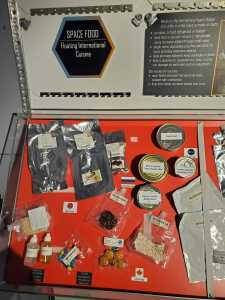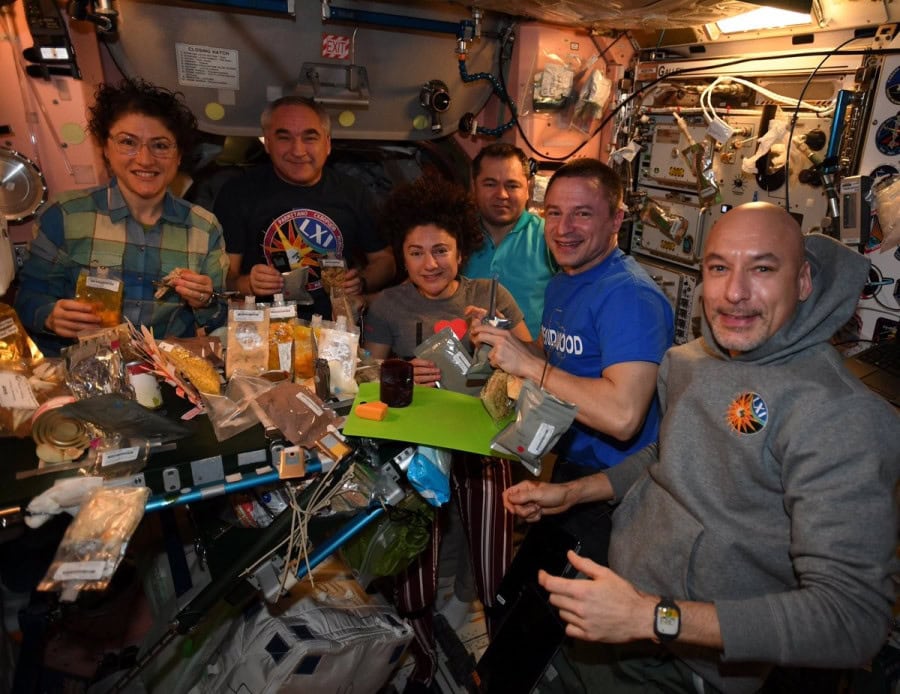Food is an essential part of our lives. It is indispensable to our survival. Even if we go on camping for a week or two, we make sure we have plenty of food and the proper gear to cook and eat it.
But embarking on a 6-months long mission to the Internation Space Station (ISS) needs more planning than wandering in a jungle.
Meals on ISS differ in a few ways from meals on earth.

Since there are no stove, refrigerator, or freezer on the Space Station, some food can be eaten in their natural forms, such as brownies and fruits.
Some meals are also vacuum-sealed or dehydrated there. Therefore require adding water, such as macaroni and cheese or spaghetti. Of course, an oven is provided in the space station to heat foods to the proper temperature.
Condiments, such as ketchup, mustard and mayonnaise, are provided.
But, salt and pepper are available but only in a liquid form. This is because astronauts can’t sprinkle salt and pepper on their food in space. The salt and pepper would float away. There is a danger they could clog air vents, contaminate equipment or get stuck in an astronaut’s eyes, mouth or nose.
Nutrition
Astronauts eat three meals a day: breakfast, lunch and dinner. Nutritionists ensure the food astronauts eat, provides them with a balanced supply of vitamins and minerals.
Calorie requirements differ for astronauts. For instance, a small woman would require only about 1,900 calories a day, while a large man would require about 3,200 calories. An astronaut can choose from many varieties of foods such as fruits, nuts, peanut butter, chicken, beef, seafood, candy, brownies, etc. Available drinks on the Space Station include coffee, tea, orange juice, fruit punches and lemonade.
What do they do with the packages?
As on Earth, space food comes in disposable packages. Astronauts must throw their packages away when they have finished eating. Some packaging prevents food from flying away. The food packaging is designed to be flexible and easier to use, as well as to maximize space when storing or disposing of food containers.










